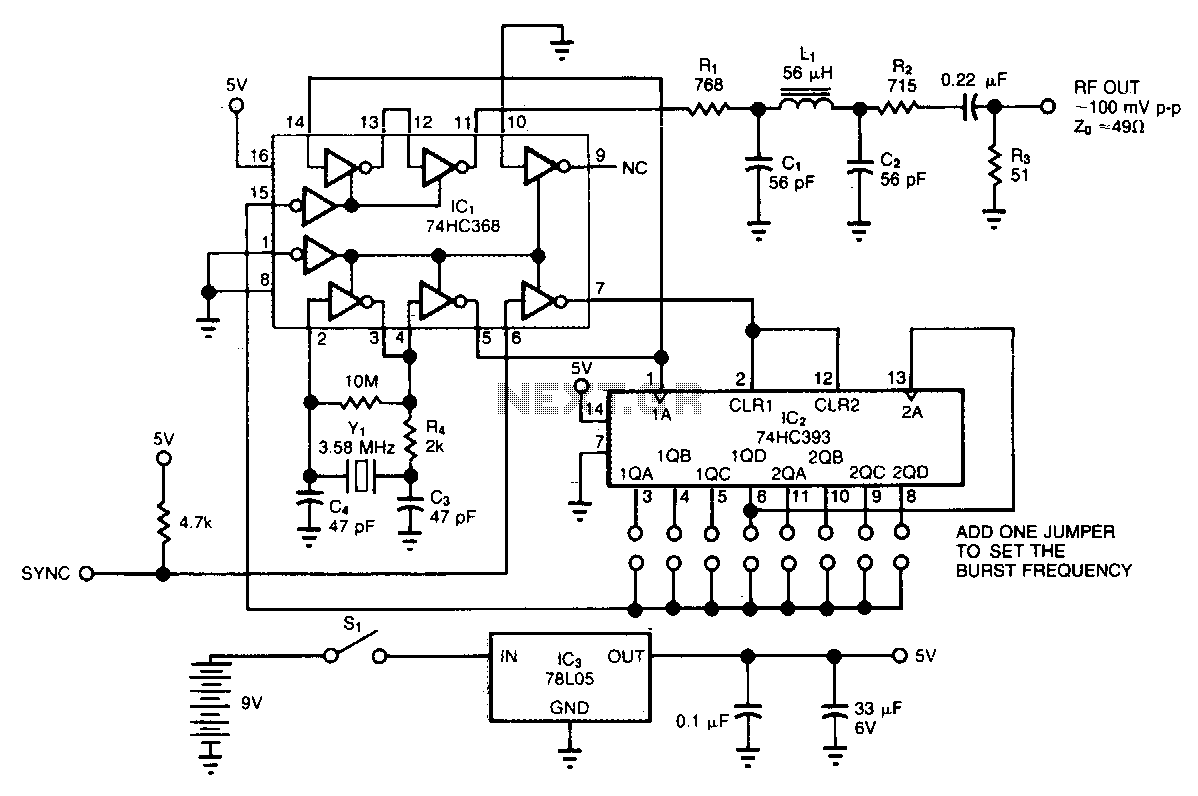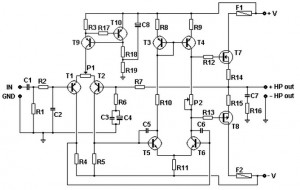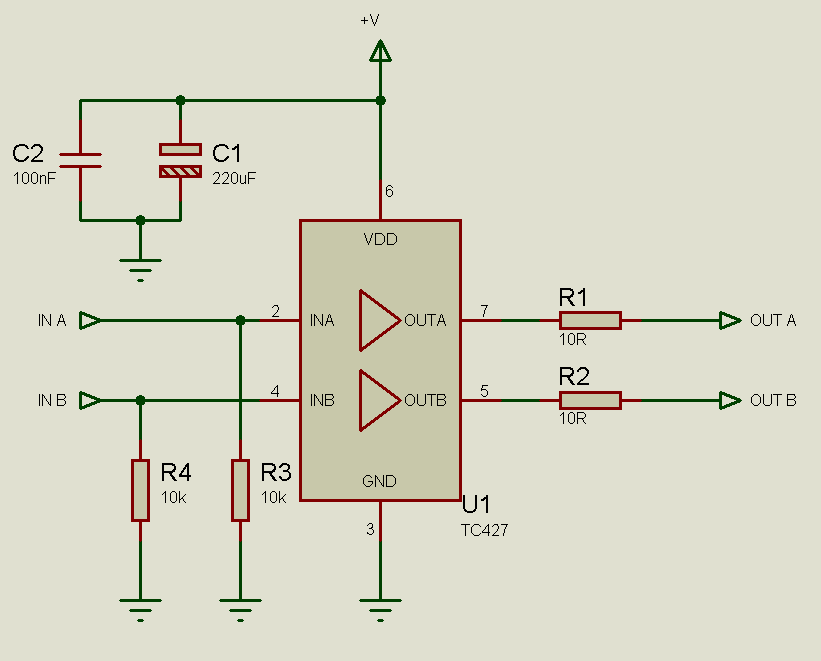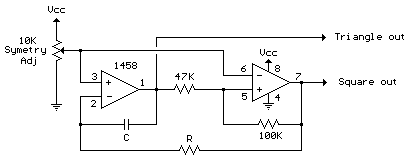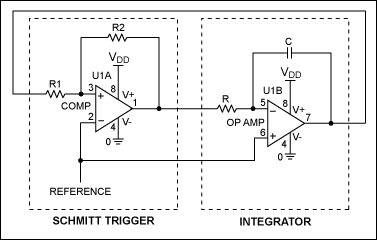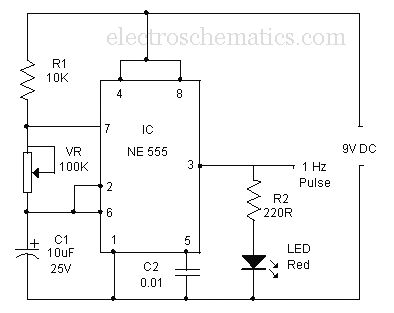
High-Voltage Generator with HEX FET
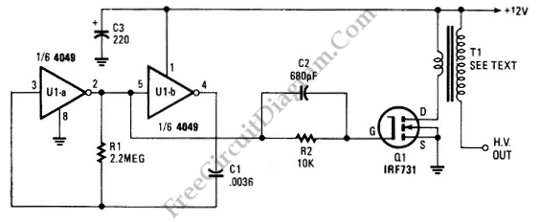
The schematic diagram below illustrates a circuit for a high voltage generator. This circuit employs a 4049 hex inverter as an oscillator, and it can be utilized for ignition purposes.
The high voltage generator circuit is designed to convert a low voltage input into a significantly higher voltage output, suitable for applications such as igniting gas burners or providing spark for ignition systems. The core component of this circuit is the 4049 hex inverter, which is a CMOS device capable of functioning as an oscillator.
In this configuration, the 4049 is connected in a feedback loop that allows it to oscillate. The oscillation frequency can be adjusted by varying the values of external resistors and capacitors connected to the inverter. Typically, a resistor-capacitor (RC) network is used to determine the timing characteristics of the oscillation. The output of the inverter can drive a transformer, which steps up the voltage to the desired level.
The circuit may also include additional components such as diodes for rectification, capacitors for filtering, and possibly a transistor for driving the transformer more effectively. The transformer is crucial as it increases the voltage generated by the oscillator to a level suitable for ignition.
Safety precautions should be considered when working with high voltage circuits, including proper insulation and handling procedures to prevent electric shock. Additionally, the circuit should be housed in a suitable enclosure to protect users from accidental contact with high voltage components.
Overall, this high voltage generator circuit is a practical solution for applications requiring a reliable ignition source, with the 4049 hex inverter serving as a versatile and efficient oscillator.The schematic diagram below show a circuit of high voltage generator. This circuit uses a 4049 hex inverter as an oscillator, and you can use ignition. 🔗 External reference
The high voltage generator circuit is designed to convert a low voltage input into a significantly higher voltage output, suitable for applications such as igniting gas burners or providing spark for ignition systems. The core component of this circuit is the 4049 hex inverter, which is a CMOS device capable of functioning as an oscillator.
In this configuration, the 4049 is connected in a feedback loop that allows it to oscillate. The oscillation frequency can be adjusted by varying the values of external resistors and capacitors connected to the inverter. Typically, a resistor-capacitor (RC) network is used to determine the timing characteristics of the oscillation. The output of the inverter can drive a transformer, which steps up the voltage to the desired level.
The circuit may also include additional components such as diodes for rectification, capacitors for filtering, and possibly a transistor for driving the transformer more effectively. The transformer is crucial as it increases the voltage generated by the oscillator to a level suitable for ignition.
Safety precautions should be considered when working with high voltage circuits, including proper insulation and handling procedures to prevent electric shock. Additionally, the circuit should be housed in a suitable enclosure to protect users from accidental contact with high voltage components.
Overall, this high voltage generator circuit is a practical solution for applications requiring a reliable ignition source, with the 4049 hex inverter serving as a versatile and efficient oscillator.The schematic diagram below show a circuit of high voltage generator. This circuit uses a 4049 hex inverter as an oscillator, and you can use ignition. 🔗 External reference
